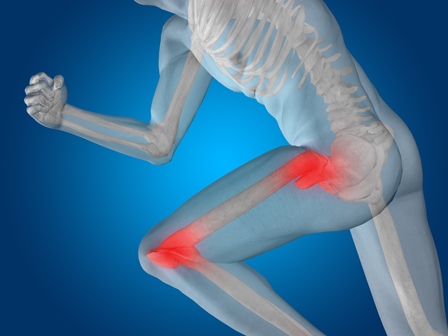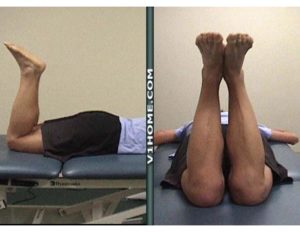IT Band Syndrome – Controversy Regarding Stretching Exercise

The Iliotibial (IT) Band is a tendon on the lateral aspect of the hip/thigh/knee. It is a large, wide, thick tendon. A tendon is a structure that attaches muscle to bone. IT band syndrome is a typical injury occurring in runners.
A commonly recommended treatment for IT band syndrome is stretching exercise.
Searching Google for IT band stretching exercises, you find countless web pages describing how to stretch the IT band and equipment that can be used such as foam rolls, bands, and braces. A search of PubMed (National Library of Medicine) failed to find any randomized clinical trials on the effectiveness of IT band stretching exercises. One wonders why are there so many ways of stretching the IT band when there are no randomized clinical trials addressing the effectiveness of IT band stretching exercises.
e IT band is a somewhat unique tendon in that, the single tendon serves as a common attachment for two different muscles, the superficial gluteus maximus muscle and the tensor fascia latae (TFL) muscle.
A basic concept of stretching a muscle is to position or move the joints in the direction opposite of the muscle’s primary actions. Both the superficial gluteus maximus and the TFL muscle act to move the leg away from the midline of the body (abduction of the leg), and to rotate the lower leg (tibia) outward. Other than these common actions, these two muscles act in directly opposite directions. e superficial gluteus maximus extends the leg backward, rotates the hip outward, and flexes the knee. e TFL actions are the exact opposite, flexing the leg forward, rotating the hip inward, and extending the knee.
To stretch the superficial gluteus maximus, the hip needs to be adducted (moved towards the midline of the body), flexed, internally rotated, the knee extended, and the tibia internally rotated. To stretch the TFL, the hip needs to be adducted, extended,
externally rotated, the knee flexed, and the tibia internally rotated.
e challenge is to determine which portion of the IT band is short/stiff and needs to be stretched, the superficial gluteus maximus or the TFL. Because the actions of these two muscles are relatively opposite, it is quite unlikely that both portions of the IT band are short/stiff. More likely, if one portion is short/stiff the other portion is quite likely long/lax. It does not make sense to do stretching exercises on a muscle/ tendon which is too long/lax.
If you are told by a health care professional to stretch your IT band, an important question to ask is which portion of the IT band is short/stiff, the tensor fascia latae or the superficial gluteus maximus? If one portion of the IT band is short, most likely the other portion is too long/lax and needs intervention aimed at shortening or stiffening the muscle/tendon. Fortunately, the specific exercises to shorten and strengthen one portion of the IT band are the same movements that stretch or lengthen the other portion of the IT band.
A basic tenet is, when moving, the body will follow the path of least resistance. In other words, when stretching muscles and tendons, the muscle/tendon that is longer and more flexible will allow movement, and the muscle/tendon that is shorter and stiffer will not allow movement. Particular care must be taken to assure the stretching exercise is precise so that the shorter/stiffer muscle/tendon is stretched and not the adjacent more compliant muscle/tendon. is particularly challenging when it comes to the IT band. Often, the adjacent joints in the low back or knee cap are more compliant than the short/stiff IT band and it is very easy to inadvertently irritate the adjacent low back region or knee cap when attempting to perform a stretching exercise directed at the IT band. In my experience, frequently clients who have been self-treating their IT band syndrome report problems spreading from the IT band to the low back or anterior knee.
Do not assume if the pain is located at the IT band that the treatment is to “stretch it out”. e tissue could be in pain because it is already too stretched out.
If it is determined that a portion of the IT band is short/stiff, it makes sense to try stretching exercises. I believe it is important to avoid irritating adjacent joints and tissues by inadvertently stretching tissues that are long/lax. Performing stretching exercises simultaneously on the right and left sides provides some assurance that compensatory low back motions will not occur.
A safe way to stretch the TFL portion of the IT band and shorten and strengthen the superficial gluteus maximus portion of the IT band is to stretch both the right and left together and make sure to control the motion of the low back and knee cap. Lie prone, keep knees, heels, and toes together, and bend knees until the stretching sensation is felt on the anterior lateral aspect of the thigh. Pay particular attention as to whether the stretching sensation is symmetrical between the right and the left. If there is asymmetry, it is likely one of the TFL is shorter than the other.

A safe way to stretch the superficial gluteus maximus portion of the IT band and shorten and strengthen the TFL portion of the IT band is to stretch both the right and left together. Bend forward, keep toes together, allow the heels to separate, and keep the knee relatively straight.

Damien Howell Physical Therapy – 804-647-9499 – Fax: 866-879-8591 At-Home, At Office, At Fitness Facility – I come to you, I do home visits Damien@damienhowellpt.com
